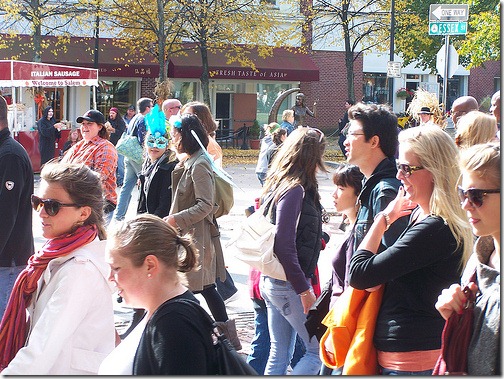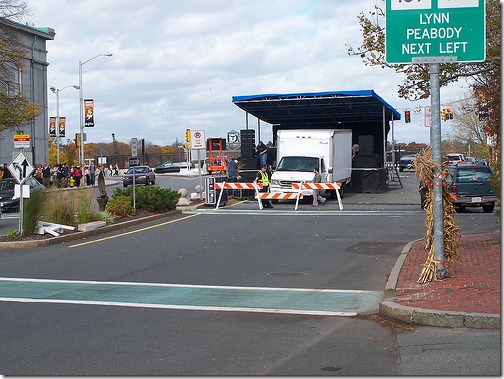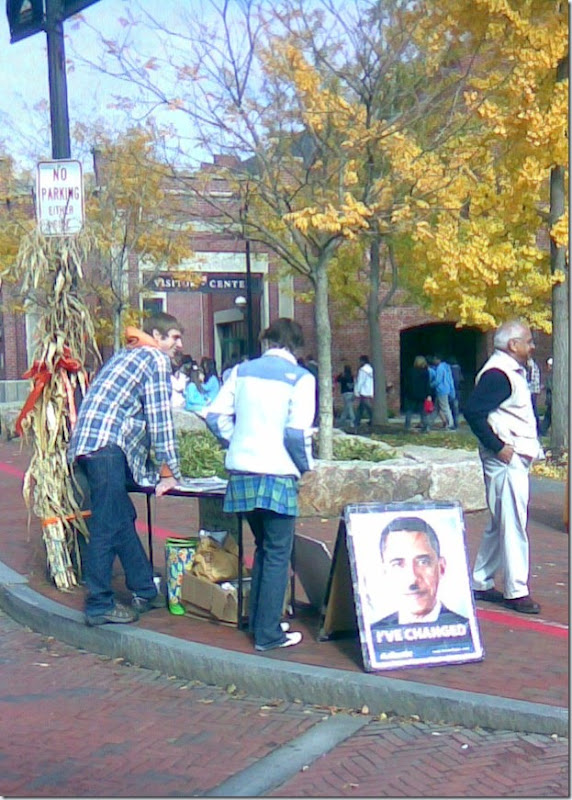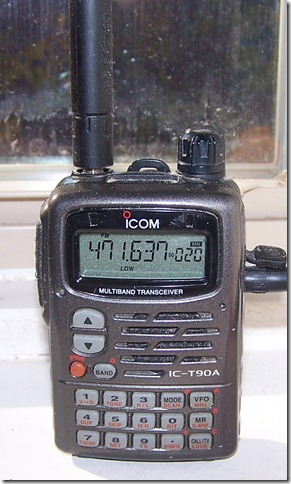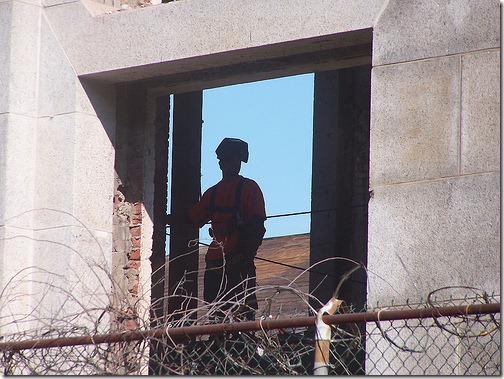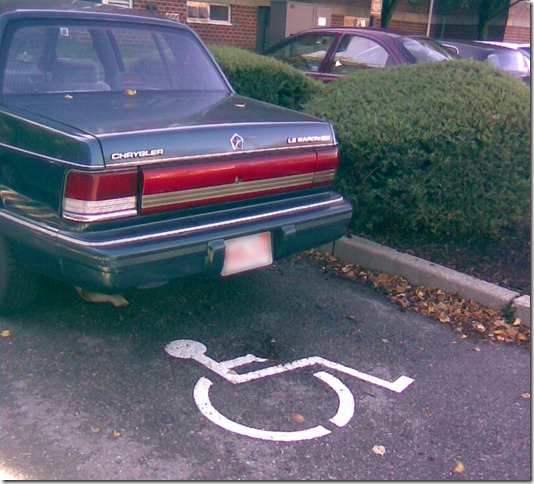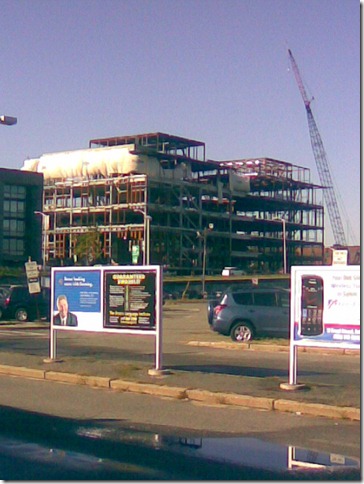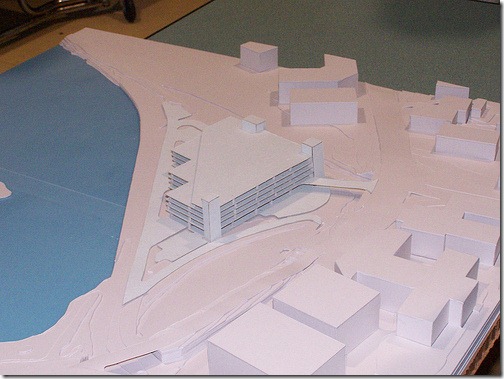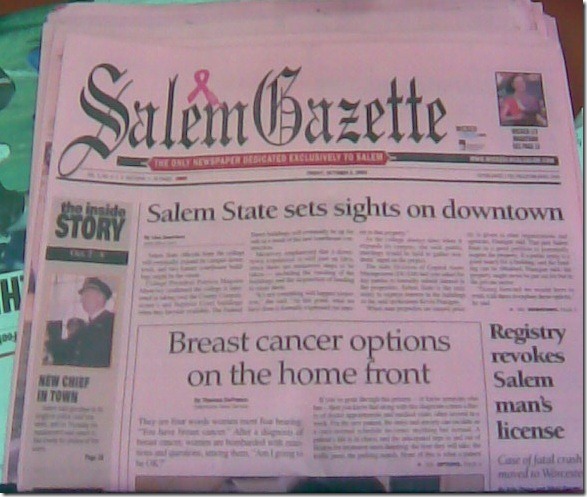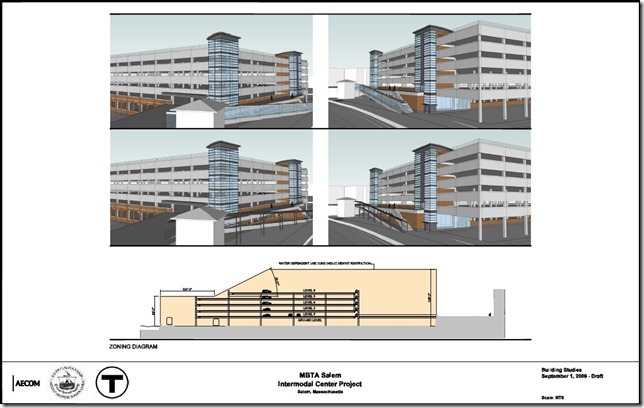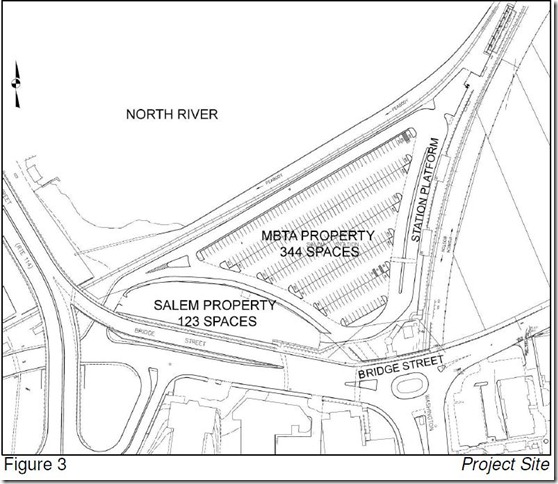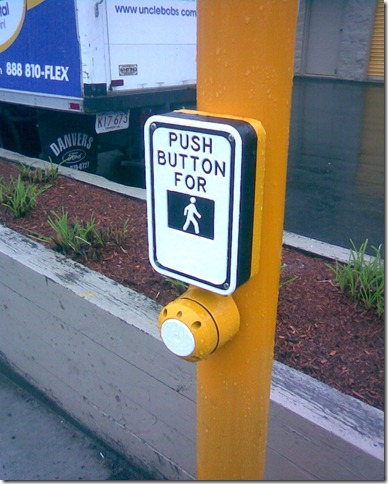
[New audible signal at the self-storage facility opposite WalMart]
The Salem Commission on Disabilities met October 20th, 2009 at 4 PM. This month’s meeting was co-posted with the city’s 5 Year Consolidated Plan review with Jane Guy and Beverly .
Presiding, Charlie Reardon, co-commissioner Present: David Martel, Beverly Estes-Smargiassi, Community Opportunities Group, Jane Guy, Community Development Director, Andy LaPointe, David Moisan, Jean Harrison, Michael Taylor, Jean Levesque, Kimberly Jones, North Shore Career Center, David Tracht.
Jack Harris was at a seminar today.
Charlie: As you all know, we were in the paper this week. Jack was on the front page Monday talking about Ken Bonacci’s parking enforcement, and there was a Salem News editorial telling us to leave it to the police.
10 years ago, Jack and I and Ken met with the MBTA and tried to work out a solution with them. Many people without plates or placards were parking in the spaces and going off to Boston. One person told a handicapped motorist “I’m waiting for my wife to get off the train”. “I’m waiting to get on the train!” He missed two trains.
Someone made a complaint to the MBTA about “some guy” harassing parkers. But we had the right to point that out to people. He made an issue of it, and the MBTA police came in, and talked to Ken and told him to leave it to the police.
You know, we [the Commission] don’t harass people, we just asked them to leave. And they made a stink about it that’s in the paper. We’ll find out what this is about.
Jean L.: Let’s get to the main meeting with Jane Guy.
David Moisan: [to Jane] Let’s get started with the special meeting, you did come here so we can ask questions.
Jane Guy: I’m Jane Guy and I’m responsible for the draft oversight forthe Community Development Block Grants (CDBG) funds. We’re responsible for planning the grant process every five years and we are getting feedback from the community. Some of you may have been here five years ago the last time.
We’re hoping to get your input over the next month with various target groups, on housing and community The Community Opportunities Group has been doing this work since 1979. I’m turning this over to Beverly; there is a sign-in sheet circulating.
Beverly: It’s a nice crowd today, and great to be here. Nice to be back. I’m going to fill out the background: The city is obligated to do this planning. It’s an opportunity to explain the needs of the community now and for the next five years. That’s what this process is for. I’m going to run through the slides very quickly because I want to start discussion right away.
The five year plan is required by law, sets priorities and measurable goals and strategies for the city. Every year, there’s an annual action plan for the next year, and this meeting is the basis for those yearly plans. Those action plans will happen for the next four years.
It does create the opportunity to let us know what’s most important. The Department of Housing and Urban Development handles the CDBG. Also involved are Federal Home Investment Partnership funds and the North Shore Home Consortium in Peabody which provided $970,000. In FY2010 we get $1.1 million From 2010 to 2015, we get a total of $5.9 million, so it’s a significant amount.
The CDBG was established by Congress in 1974; it is a large source of federal aid to the communities. It includes housing, infrastructure, economic development, seniors, facilities, homeless, anti-crime programs, planning and administrations. It’s flexible.
Any project must be approved through HUD and meet one of three national objectives: Low or moderate-income, prevent blighted conditions, or address critical community needs. People around this table know about low and moderate-income people. The details are in the pamphlet I’ve handed out.
Who decides how funds will be used? This is the first part of the process, the decision-making process. And after this step, the plan will be reviewed by the citizens advisory committee, Mayor and City Council. There will be additional public comments. It’s approved by them, and then goes to the feds for final approval.
Community development programs are homeless services, housing, public services. These are the sort of things already happening in Salem. There’s a listing of some examples of recent and ongoing projects, including Palmer St., Salem Mission, Salem Harbor CDC housing renovation, rental subsidies, and park and playground improvements [such as Harbor St.]
The programs are run through the Salem Planning and Community Development, but are sometimes administered by others, like the Salem Harbor CDC and Salem Main Streets.
Your participation does make a difference. As Jane says, there’ll be ten consultation meetings, then meetings with city staff. There’ll be interviews with social service, training, and healthcare officials. Interviews with historical commissions.
What happens now: I’ll send Jane the outcome of this meeting and she’ll make it available.
Now, what do people see as assets? We concentrate on problems so much, we want to see what’s positive about Salem.
Dave Martel: Historical preservation, Pioneer Village, Old Town Hall
David Moisan: Two points all by myself, Andy will confirm: We have a train station. And a considerable amount of public transit. Not as much as we want, but we have them. More importantly, we have the sidewalks and access for people with disabilities. We have contentiousness, but only because we are farther ahead than most other communities.
Jane Guy: That’s the kind of projects this funding has been used for.
David Martel: That’s just common sense. We had a situation with the elderly housing on Charter St. and the public library
Kimberely: Is the process limited to this list?
Ka
Andy: As far as curb cuts, there’s still some need. How about snow removal? Is it separate?
Jane: That is separate.
David Martel: Charter St.: Elderly have to hop over a snowbank to reach the curb cut.
Andy: There are people out there walking with canes that can’t get to the pedestrian signals through the snow. It’s a blessing I have GPS, actually. I’d like to see us work on snow removal and everything else, of handicapped spots and curb cuts.
David Martel: YMCA parking lot. They piled snow in the HP spot on Essex St. You’re paying $1200 for a contractor to dump snow on a $2 parking spot.
Andy: We have fifty million in the US with a disability. One in 10 are visually impaired. or mobility impaired. Salem is a major attraction for people around the state and is regarded as a disabled-friendly city. We have twice the spending power of teenagers. So, here in Salem a lot of disabled people are coming here as we speak. It’d be good in the wintertime to work something out.
Charlie: If we have a handicapped curbcut to be done in Salem, who would be contacted?
Jane: []Giardi would be the one to handle it. He has a certain amount of money each year for curb cuts.
Charlie: Social Security Office doesn’t have a curb cut between the parking lot and the office across Federal St.
Kimberly: It’s a wonderful asset to the city to have an accessible downtown area, an economic downtown, the volumes of people that come. People are coming in. We have emergency resources, our services are free. There’s a big push for certification training. People are having to retrain. Again, I think it’s a wonderful thing for people to travel from different areas to here to get services.
Andy [to Kimberly]: What about accessible computers?
Kimberly: That’s a question I have to ask Sandra since she coordinates all the accommodations in the center.
Asking about JAWS, Open Book, etc. After a while, the way websites are reformatted, and needs an update.
Kimberly: We need an upgrade. I wish Sandra were here to answer that; I’m not equipped to answer the specific questions. Thank god there’s a disability coordinator to link people to community resources.
We have til November 20th to submit a better organized proposal?
Jane and Beverly: Yes
Beverly: Thank you very much. We learned a lot. I want to talk about our findings for 2005, and see what ones may be more important. Some may be less important. I want to see what issues are percolating up.
2005 plan: 1) Rental affordability, 2) Affordable housing preservation, a lot of them were aging out of their mortgages and could become market-rate housing. 3) Condominimum development was a bit of a concern five years ago; that may be shifting a bit at this point. At that time there was a conversion issue and a lot of rental units being done, and a desire to protect the rental market.
4) Public services are on the list. Social services are on the list, and have become a bit more integrated with community development in general.
Jean L.: Before you go too far, housing. The situation on Crombie St. for the past 15 years, and now the situation now. What’s the status of that project now?
Jane: I got a email from them that some units are being rented and others being worked on and they’ve gotten approval from the state. It was a long process needing to go to the Board of Appeals, but it is underway.
Jean L.: How do you apply? Restricted income?
Jane: The information is on their website. I haven’t looked at. Michael Weyland at the Salem Harbor CDC is running this. I’ll put you in touch with him.
Jean L.: The Commission on Disabilities is an asset to the City. We’ve been fortunate to have these people offer their services at no charge; these are volunteers who go to great lengths to make the city of Salem aware of the needs of disabled people in Salem. The problem with the MBTA, we’ve been fighting that for 5 years.
Jean L: The city hasn’t been giving us any help. We’ve been looking for someone to do the minutes for us. We have volunteers, but need support.
David Martel: An office. We have an office but no items.
David Moisan: No office supplies, nor desks nor computers.
Jean L: Any help?
Jane Guy: Certain things are eligible, certain things are not.
Jane: The minute-taking is not eligible for our assistance. Office space? No other board or commission has space.
Beverly: The CDBG is funding new initiatives, such as the computers at the library. If you think in those terms…
Jean L.: We have office space in the South Harbor Garage that requires certain equipment.
David Martel: If we have an office but not the personnel to support it, are we in violation?
Jane G.: Yes. You have a budget?
Jean L.: Yes, but very small.
Beverly: I want to continue, and get people to tell us what’s still pertinent, what are the big-picture items. Elderly housing is also on the list. Last time, we had lots of housing but it was a bit faded and not up to snuff and we needed coordinated services [home care] that went with it but wasn’t always present. Finally, there was a need to be strategic and coordinated and to look at items that couldn’t be funded another way.
That was ‘05. It’s now 2009 going on 2010. Do some of these findings or all of these findings remain relevant?
Andy: Social services, what does that entail from 05 to the present?
Jane: The outcome; each year we issue an RFP to social services organizations to get CDBG funding. That could be youth groups, community orgs, SATV, and 30 groups we regularly fund. Before 2005, we were responsive to public services and what they needed. After, we identified priority programs that we would fund, like housing programs that helped a family become self-sufficient; if they needed childcare, and prescriptions, that would fulfill the requirements. We wanted programs that would help people afford their day-to-day lives. Medium priority programs were health and youth programs; Low priority was everything else.
Organizations should have explicit programs and justification. We won’t just “fund something for cats” because we say so, there has to be a documented need.
Andy: You mentioned SATV. We have a problem there. They have a bulletin board. We used to have an audible bulletin board for visually impaired. Dave M. could elaborate. How would that fit in the realm of things? IF they needed a program to update things?
Jane: Certain things could be funded. It sounds like an eligible expense. It could be considered.
Andy: They have volunteers, but upgraded their system and can’t do this anymore; it’s too difficult. It would be [a] voice-over. A good amount of people in Salem could use this program.
Dave Moisan: I’m authorized to speak for SATV; I am the liaision for SATV and their IT person. Besides the thing Andy has asked about, which is something Andy and I have been around for quite a while, the other thing we’re trying to do is to get some kind of support to take our city meetings, our public meetings like this one. Right now, I’m recording the meeting today, I am taking the minutes and transcribing them. I’m doing that all out of pocket because I was never able to come to an agreement with the city to help. There are more public meetings than we can tape and we want to put the meetings online on a website.
That’s not strictly disability-related, but that’s one thing that almost always comes up when the bulletin board issue comes up.
Beverly: Is that happening and are you overwhelmed?
Dave M.: We don’t have the money to pay to put it on the web, or the staff. We have only three full time people [at SATV]. People and Money. The bulletin board is another can of worms.
Charlie: How much?
Dave M.: I have to get that info the next time I talk with Sal. We go online and have to pay for it. We talked about putting it on the city’s website and using the company’s video services. We’ve looked at putting meeting audio on our website. We don’t pay [extra] to put it on our website but there’s still labor. I don’t know the details; between some labor and some money to all the way up for lots of labor and a web host.
Charlie: Can you give a figure?
Dave Moisan: Off the top of my head, somewhere in the hundreds, and somewhere in the thousands. I am aware of some legislative bodies who’s states have had to get $10,000 grants to put their meetings up on the webs. This is the range I have heard the last time I investigated [a few months ago].
Charlie: Quite a bit
Dave M.: The way we do with audio costs less, but more work on our part. The labor won’t be any less and I won’t depend on volunteers, it’s too involved, without knowing exactly what I could ask from them. I was going to do a test with our meetings, which are already in audio; that labor is done. I have no specific [proposals], that’s still up in the air and not discussable today.
Beverly: I want to move on and ot take up the whole meeting. If I can also go back to a few things. The 2005 things are relevant; I had SATV and public access issues down; are there other things you want to put down?
Kimberly: There’s a group of folks who can’t get their records [CORI] sealed, and need to move on with their lives, and can’t.
Dave Moisan: Charlie, Jack has been talking about doing parking enforcement with the police. Like in Waltham, if we don’t want to do it ourselves, the Commission gets some money to pay for a detail officer who does.
Jane Guy: Generally, let me stop you a bit, it’s not used for salaries. You should not talk about salary-related items, this isn’t the program for it.
Beverly: Disabled housing. Last time we met, that was raised.
[person in background] We had difficulty finding affordable housing for people in wheelchairs; there’s difficulty finding housing that is advertised, but not for people in wheelchairs. One unit offered a roll-in shower but that was really impractical.
Jane Guy: I don’t know the unit number off hand but I can get that for you.
[person in background]: Bookmobile? That could come in for people unable to get around.
[person in background]: We’re sending out applications to everywhere. The stories we get are phenomenal and we get them every day.
Jane: We will be doing more meetings [in the coming month] on that.
Andy: Audible traffic signals. Some on the corner of Lafayette and Derby are the old types that honk with a buzzer. There’s no way to get funding for those to get locators? A person who comes to Salem [from Boston] approaches a light that pings when they get up close to it—a locator—audible traffic signals.
Beverly: When you press the button…? It makes a ping?
Andy: Reason I mention it, the signals are the old technology. They work, but often break down. These new ones are state of the art and work better. Down over the overpass [North St.], Salem State, Marlborough Road. I have no idea why Salem State hasn’t called for help on those.
I have a seeing-eye dog and it’s his job, but those students with a cane have to depend on the parallel traffic and whatever else is going on.
Dave Martel: Salem Hospital. The audible never works. I see elderly people who are waiting. They stand until you help them cross.
Andy: John Giardi has been up on this. Has it been going on for a few weeks.
David Moisan: The signal [by St. Peter] is a ringing (old-style) signal. MassHighway came to turn them down because of the neighbors [at the Jefferson]; for all intents and purposes they’re not audible signals anymore. MassHighway promised the new audible signals Andy is talking about but they didn’t deliver. I’ve got to pursue every possible avenue as the new train station is coming in and I want all intersections downtown and the new courthouse, to have audible signals for the disabled. I will pursue every avenue for this.
Dave Martel: The accessibility of First St., which my friend was involved in. The management was supposed to be contacted?
Charlie: I don’t know yet.
Beverly: I would like to go on and wrap up. If people could tell me what the most important items to pursue in the next two or three years for the CDBG.
David Martel: Handicapped housing unit compliance. I have heard things, even small things like counter height, which makes quite a difference for someone in a chair. It’s a thing they often don’t realize til they get there.
Charlie: The City of Salem should know what units and places are not handicapped accessible. Example downtown: The information booth has haybales in front of it—you can’t get to the booth in a wheelchair. The city of Salem should be able to police themselves! [The chamber of commerce is manning and responsible for the booth, in front of the fountain.]
Andy: Curb cuts. Not all curb cuts have the tactile pad. That’s important. When you go down Lafayette St. you can’t tell whether you’re at a curb cut or just a [driveway] slope. All new curb cuts have a tactile slope.
David Martel: The city has a paper map, but I’ve proposed a blue line connecting accessible businesses and accessible routes. I’ve volunteered to draw this so people can see the blue handicapped line and know where to go.
Jane: That would be an easy thing to do.
Beverly: Teriffic!
David Martel: This way, they know how to get to the Witch House.
Jane: I’m going to contact some people and see if we can get this going.
David Martel: They’re not from this area. They’re from Winthrop. She told me, “I don’t know how to get to the Witch House”. We don’t need to paint a blue line on the street; just a paper line on a map at no cost to the city.
Beverly: Any one add anything?
David Moisan: Traffic signals? On the list?
Beverly: I can add it in.
David Moisan: Add in what Andy and I were talking about.
Andy: As far as the locators, it’s important that they’re there on both sides, as when they cross they’ll be listening to the ping on the other side. They tend to veer off, especially if they don’t know the area. Someone coming from gods know where will be looking for the other side.
David Martel: They’re used to crossing with that type of signals.
Andy: A lot of people who cross, their minds are focused on trying to keep a straight line. Can we get back to you? How much time do we have?
Beverly & Jane: November 20th is the last meeting.
Jane: [in response to an inaudible question from Kimberly] Housing is the main priority. If you have a hundred items someone deems important, if you only had money for ten, what would be the most important priorities?
Kimberly: I’d say we needed to address affordability.
Andy: Next month I bring in ice cleats. That’s the only way to survive walkways [in winter.]
David Martel: A lot of sidewalks are clear and safe, but like on Charter St., the curb cuts are not plowed. The maintainance people don’t know they’re there.
Jane: Has this board sent a letter?
David Martel: Yes. Those are the only crosswalks in that area.
Jane: I think it’s important to know this, you can put all the curb cuts you want, if it’s not maintained. They go hand in hand.
Beverly and Jane: Thank you for your time. There are, in the book, a list of other meetings you can attend if there’s something you think of later on.
Andy: I noticed you gave me the paperwork. If you have a need for anything in Braille, I can do that. I have a Braille printer. Just be sure you email the information in a text file and I’ll get the information.
Jane: We haven’t had a request for it.
Andy: The National Braille Press can do this in a month, but I can do it quicker.
Jane: All of this information will be available online.
[The commissioners thank Beverly and Jane for their time.]
[End of the Consolidated Five-Year Plan meeting]
Andy: Jean gave me this talking calculator. It comes from the National Foundation for the Blind. He asked me to give it to someone who needed it. It’s a really nice one.
I know this is taped so there may be someone listening who could use it?
If I have a lot of requests, I’ll put their name in a hat and pick one. As long as they’re physically impaired, visually impaired or blind.
Jean L.; Show this to David Tracht and see if he could use it.
Andy: Money identifiers: The one that I have costs $200. Another came from Orbit Research and costs $99. Number for Orbit Research is 1-888-60-ORBIT. [www.orbitresearch.com]
Andy: The calculator’s a really good one. If anyone needs it, the calculator, they can call me at 978-745-4289. If I get more than one request I’d have to be fair about it.
David Tracht: I’m interested if no one else is. If someone else is interested…
Andy: [to Dave Moisan] When is this meeting first aired?
Dave Moisan: I think this coming Thursday.
Andy [to Jane]: Thanks for coming
Andy [to Dave Moisan]: How about next week? Is that fair?
Dave Moisan: It will air more than once next week.
Andy: I want to find out what brand that is. Mine is nice, but that one is nicer.
Dave Moisan: Want to talk about the side walk meeting past Thursday?
Andy: Can we table it? I have to go, Elliot wants to stay. David Tracht, want to hold on to the calculator?
David Tracht: Charlie has it.
Andy: I’ll call up the National Federation for the Blind and find out who made it for them. If there are no takers it goes to Mr. Tracht.
Charlie: I have a copy of the Bridge St. plans right here if someone wants to look at them. They cover everything. Jack has them if anyone’s interested.
David Martel: They cover, what exactly?
Charlie: Bridge St. from the bypass road to the old bridge.
David Moisan: One last item: SATV is replacing its furniture. This table will be gone by next meeting. We have recipients lined up for a lot of items; Doug Bollen is getting this table.
We are looking for nonprofits who need filing cabinets and such. My understanding is that every item of furniture not nailed down is being replaced. We also have a copy machine a few years ago that we haven’t been able to get rid of. I had hoped to get it for our office but we’re delayed. I don’t know when or even if we will have a staffed office, so I want to throw the offer to any nonprofit in the sound of my voice. We really, really are trying to get our executive director to do some winter cleaning. We have too much stuff, we need to clean.
Charlie: Who to call?
David Moisan: Call Sal, 978-740-9432. Any of us will get you in touch with him. We want to move on this very quickly. I was just told of this today; let’s do some cleaning.
David Moisan: OK, I think that’s it!
Charlie: It is, Happy Halloween!
[Adjourned, 5:25 PM]
